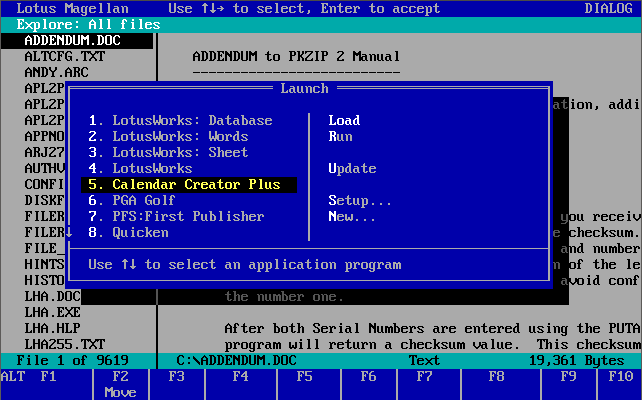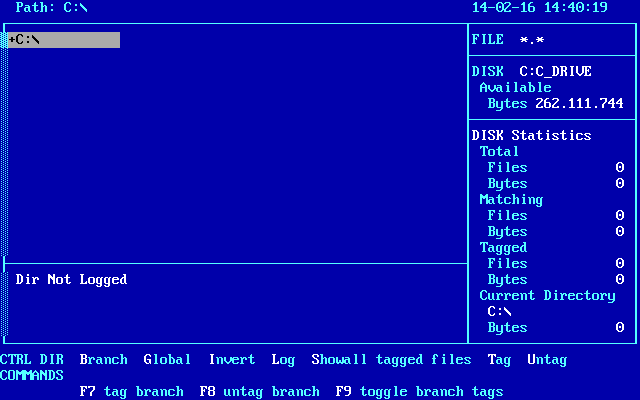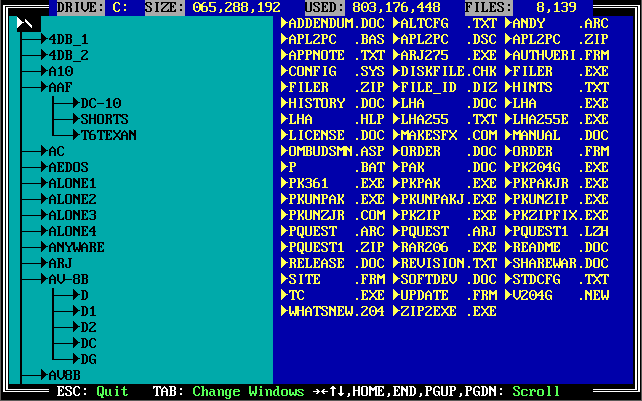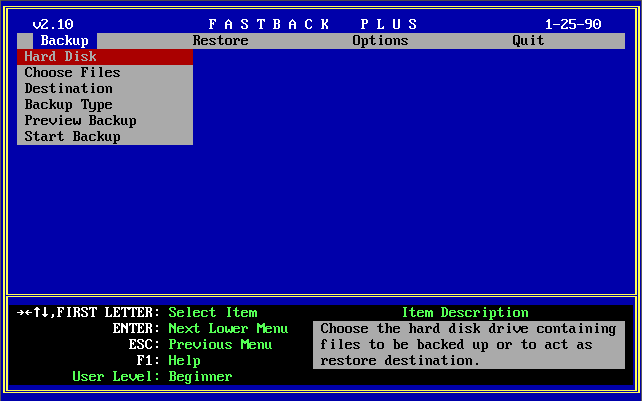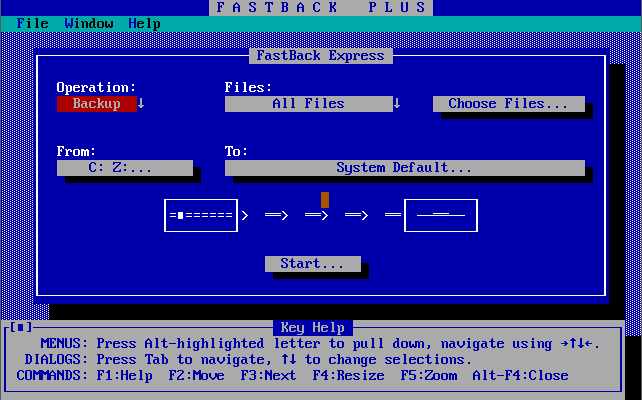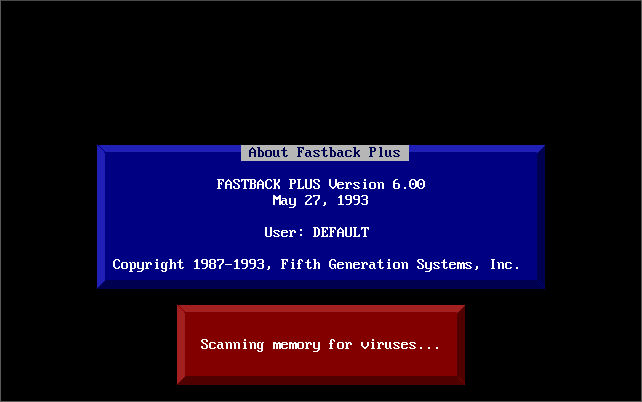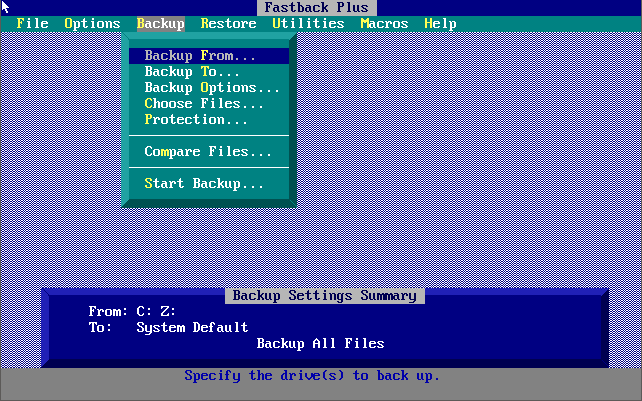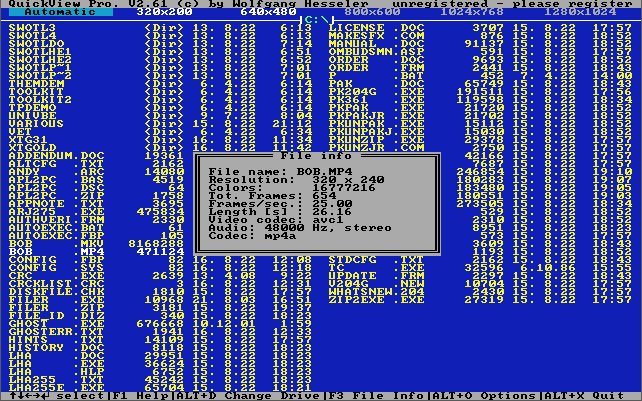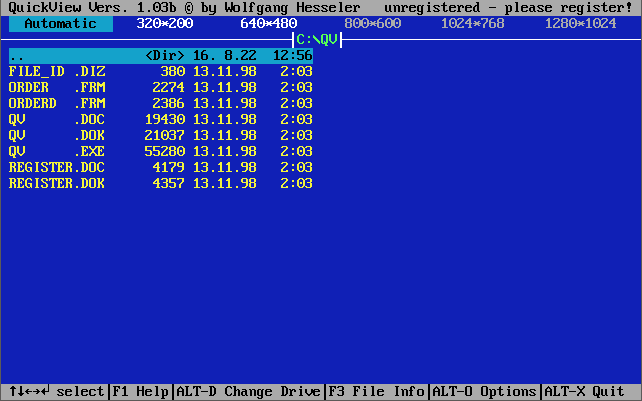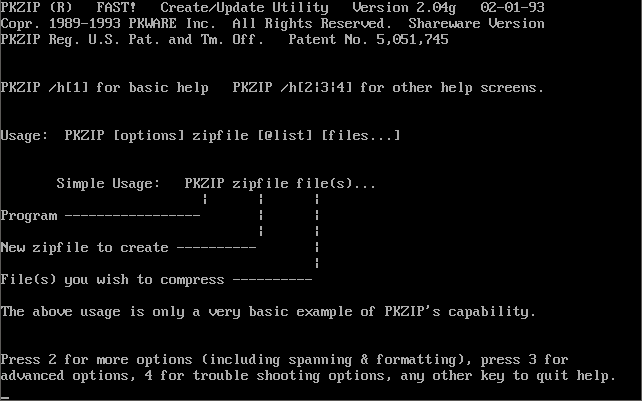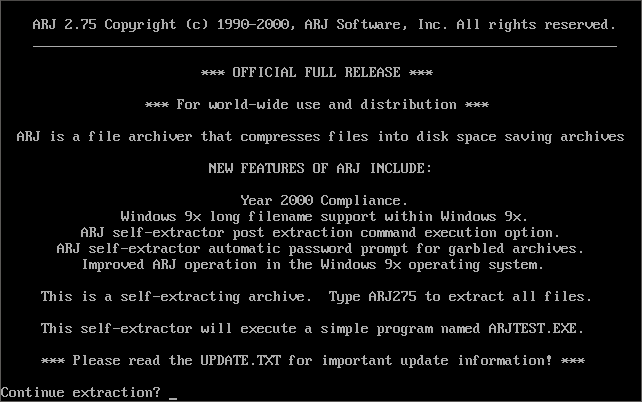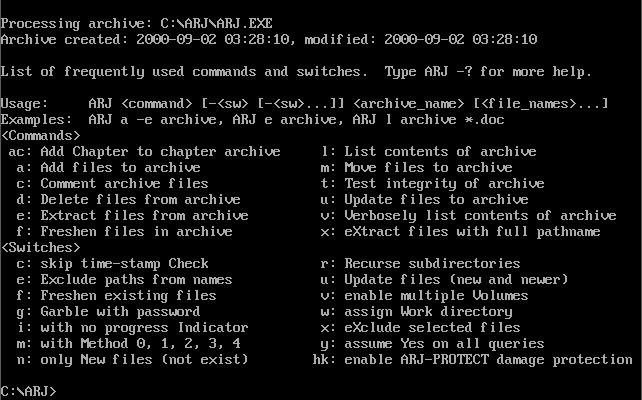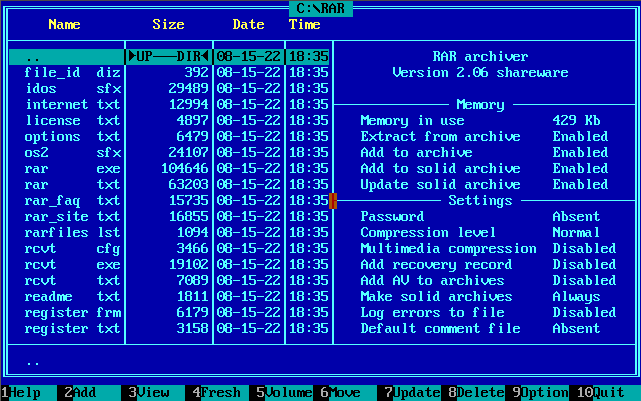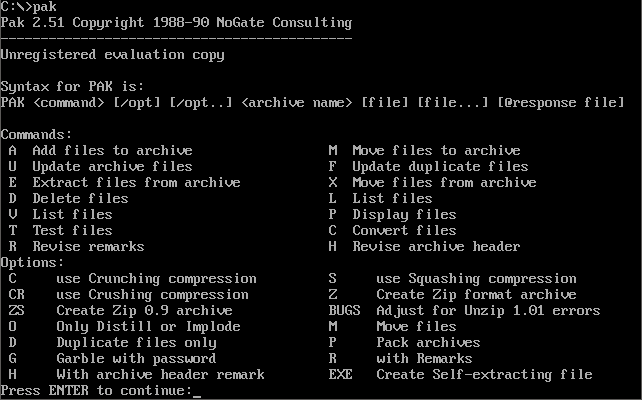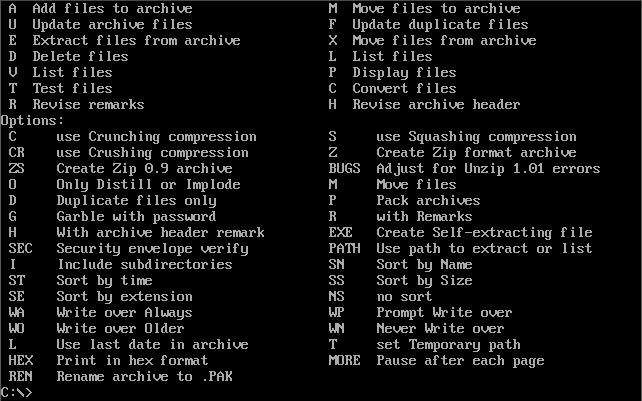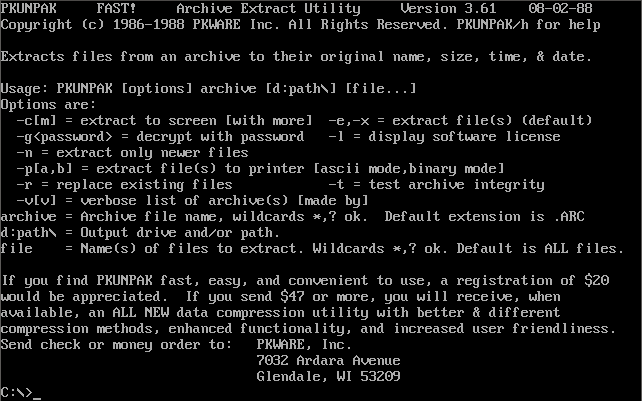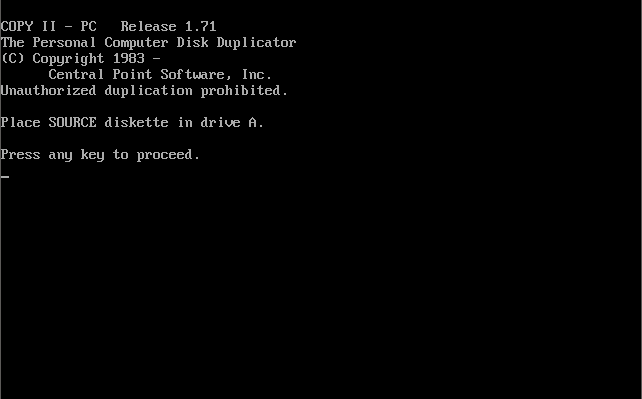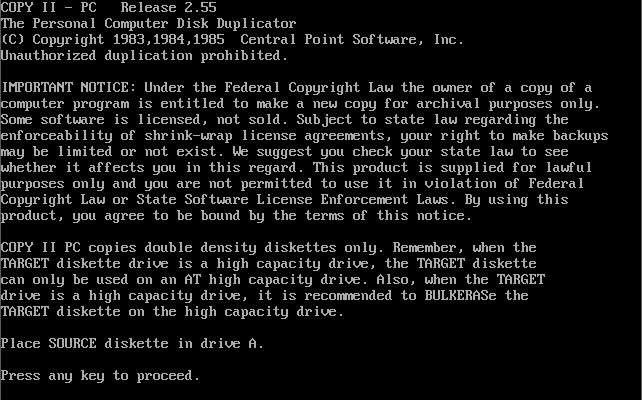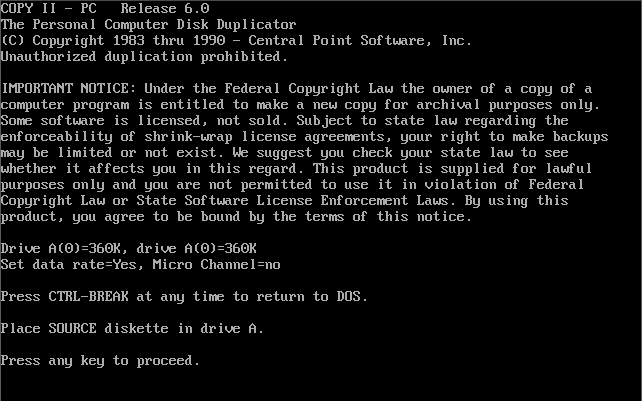File Utilities
The programs on this page are to be used at your own risk. They are made available here on the basis that they are considered 'abandonware' by their original authors, or the authors' policy on reproduction is permitted.
The following sections exist:
File Managers File Backup Tools Media Players File Editing Tools
File Compression Utilities File & Disk Copiers Hard Disk Utilities
File Managers
Lotus Magellan Magellan was a desktop file viewer and search tool. It indexes all files on your hard drive, and you can search for related information across file formats. The program comes with a demo to help you get up to speed quickly on its use.The download above is the full product. Click here to download the PC Magazine demo cover disk image.I have a dedicated Lotus Magellan page here at DOS Days. |
Lotus Magellan Magellan was a desktop file viewer and search tool. It indexes all files on your hard drive, and you can search for related information across file formats.
|
FileMaster A clone of Executive Systems' Xtree Gold.
|
XTree This is a very early version of XTree, by Executive Systems.
|
XTree XTree v2.00E by Executive Systems. This is the Evaluation Version, but is fully functional.
|
XTree Gold Create a directory named XTGOLD on C: then copy unzipped contents into that directory. To run, execute XTG.EXE within that directory.
|
XTree Gold XTree v3.01 by Executive Systems. This is the full version that came on two high-density 3.5" floppy disks.
|
|
Backup Tools
CRC Written by Howard Vigorita, CRC calculates a signature for one or more files (in the form of a CRC or Cyclic Redundancy Check).
|
FastBack + Fastback Plus, by Fifth Generation Systems, Inc, is a backup utility for DOS.Its key feature is that it can read and write both a floppy disk and hard disk at the same time by making use of dual-channel DMA. Combined with speedy data compression, it can make a very fast backup of your hard disk to floppies.
|
FastBack + Fastback Plus, by Fifth Generation Systems, Inc, is a backup utility for DOS.Its key feature is that it can read and write both a floppy disk and hard disk at the same time by making use of dual-channel DMA. Combined with speedy data compression, it can make a very fast backup.
|
FastBack + Fastback Plus, by Fifth Generation Systems, Inc, is a backup utility for DOS.Its key feature is that it can read and write both a floppy disk and hard disk at the same time by making use of dual-channel DMA. Combined with speedy data compression, it can make a very fast backup.
|
FastBack + Fastback Plus, by Fifth Generation Systems, Inc, is a backup utility for DOS.This version supports backing up to a QIC tape drive or SCSI tape device, has built-in virus scanning, offers hypertext help, network device sharing, and laptop-to-desktop backups.
|
Norton Ghost Norton Ghost is a PC cloning and imaging tool. |
Tape Mate SCSI tape backup software by Trantor. |
Tape Mate SCSI tape backup software by Trantor. |
Media Players
Quickview Pro QuickView Pro is a DOS-based multimedia viewer written by Wolfgang Hesseler. The product is shareware.It supports videos of type MP4, DIV, AVI, MPG, MOV, QT, VideoCD and more, music audio of type MP3, WAV, VOC and more, and pictures of type JPG, BMP, GIF, PCX, TGA and more.
|
Quickview A "Real mode" version of QuickView for old 286 systems, systems operating under low memory conditions or if you use QuickView with your own real mode programs. |
MPEGone An MPEG and VideoCD player for DOS.Supported are MPEG files with suffix .MPG, .M1V, .MPE, .MPV and .DAT. DAT files are files from the VideoCD that are usually named AVSEQ01.DAT and so on. VideoCDs and CD-i (partly) are supported using the /VCD command.The player is a 32-bit protected mode program and therefore needs at least a 80386 processor. For playback of MPEGs with higher resolutions, a Pentium 166 system is recommended. For sound decoding you must have a coprocessor. Full screen video playback is supported either using hardware scaling (certain graphics chips only) or via software (requiring more CPU power).
|
File Editing
uHex uHex is a simple and fast multi-platform hex editor. uHex has been written with care to work fast even on an 8086 CPU, providing support for large files (up to 2 GB) while using minimal amounts of memory. "uHex" stands for "micro Hex" (it should actually be spelled µHex, but DOS operating systems do not allow non-ASCII symbols in filenames, thus the official name became just "uHex").uHex supports several video text modes (80x25, 80x43, 80x50.. and any other, as long as it has at least 80 columns), both in color and black & white modes.uHex has very low requirements. It runs on anything that provides: |
|
File Archival & Compression
PKZip PKZIP/PKUNZIP from 1993. Version 2.04g was considered the definitive version to use during the later DOS era. It had arguably the best degree of compression, was backward-compatible with all earlier versions, and also supported the creation of self extracting archive files (.EXE), spanning multiple disks and password encryption.
|
LHA LHA, written by Haruyasu Yoshizaki, was a popular compression and archival utility for DOS. It produced .LZH files with excellent levels of compression, and also supported self-extracting .EXE files that contained the archive.Unlike some other archiving tools, the single executable file performs all operations.
|
ARJ ARJ is a file compression utility that uses the Robert Jung compression algorithm. It didn't get a much publicity as LHA or ZIP, but is still a good quality compression tool.This late version of ARJ supports long filenames, has password encryption and is Year 2000-compliant. You can create self-extracting archives.
|
RAR RAR is a file compression utility written by Eugene Roshal. As with LHA and ZIP, RAR files have excellent compression.This late version of RAR is unique among its peers here in that it supports both a UI/mouse-driven interface to create and manipulate RAR archives as well as the traditional command-line options. Just as with other tools, it also supports the creation of self-extracting archives.
|
PAK Not to be confused with the more common PKPAK from PKWare, PAK comes from NoGate Consulting.
|
PKPAK Before the .ZIP archive format, PKWare had PKPAK and PKUNPAK. These use the .ARC file extension.
|
TeleGet This DOS program by Sydex can be used to create an IBM PS/2 Model 25XT Starter Disk from a .TG0 TeleDisk file. |
ARCE So you've got an old ARC archive file that none of the modern ARC extractors recognise? |
File & Disk Copiers
Copy II PC Central Point Copy II PC is a disk duplication program that can successfully copy many copy-protected disks using only standard IBM PC hardware. It is generally considered the best software-only solution for duplicating such disk.
|
Copy II PC Central Point Copy II PC is a disk duplication program that can successfully copy many copy-protected disks using only standard IBM PC hardware. It is generally considered the best software-only solution for duplicating such disks.Copy II PC will not save images to floppy disk. However this limitation can be overcome with a third party utility called "snatchit".Copy II PC came on a system disk, and included other utilities including BULKERAS, NOGUARD and NOKEY. It also had a PCjr-specific version called CopyIIJr.
|
Copy II PC Central Point Copy II PC is a disk duplication program that can successfully copy many copy protected disks using only standard IBM PC hardware. It is generally considered the best software-only solution for duplicating such disks.Copy II PC will not save images to floppy disk. However this limitation can be overcome with a third party utility called "snatchit".It is speculated the omission of saving was to appease businesses using copy protection, but more likely is was to avoid competition with their Copy II PC Option Board/Transcopy hardware. |
Copy II PC Central Point Copy II PC is a disk duplication program that can successfully copy many copy protected disks using only standard IBM PC hardware. It is generally considered the best software-only solution for duplicating such disks.Copy II PC will not save images to floppy disk. However this limitation can be overcome with a third party utility called "snatchit".This is the final version of the product. It is also the preferred version for anyone using Copy II PC as it has the best support for faster processors. In a few cases, however, it may reject specific copy protection methods that earlier ones may copy due to pressure from vendors.
|
Transcopy This is the Transcopy utility software for use with the Copy II PC Option Board.The Copy II PC Option/Deluxe Option Board/"Transcopy" card is an ISA expansion card created and sold by Central Point Software that enables an IBM PC or compatible to duplicate most floppy disk copy protection methods.Despite the name, it has little in common with the original software-only Copy II PC (see below).
|
Hard Disk Utilities
Disk Technician Gold Disk Technician Gold is a hard disk utility and surface monitor. It contains an interleave adjuster and pattern tester similar to Spinrite, and also includes a defragmenter and disk-level virus protection. |
MaxLLF MAXLLF is a utility for low level formatting IDE (PATA, Parallel ATA) hard disks drives. Technically, on newer IDE drives this simply wipes the drive, but also forces bad/weak sectors to re-map to spares. Supports CHS (Cylinder/Head/Sector) and LBA (Logical Block Addressing) up to 127GB and works with any brand of drive (not just Maxtor). |
Park A program that parks the heads in MFM and RLL drives. |
|
SpeedStor Use 6.03 for XTs and clones. Copy the ZIP contents to a bootable 360K or 1.2M floppy. |
SpeedStor Use this version for ATs and clones. Copy the ZIP contents to a bootable 1.2M floppy |


